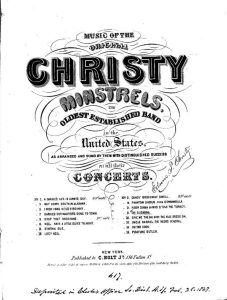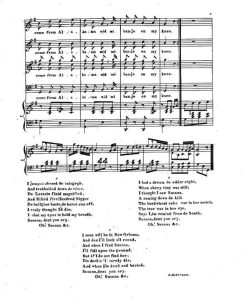I have often thought my music education is racist. There is a clear cut canon from which undergraduate students gain their foundational knowledge, and to deviate concerns what we conceive as entirely other genres. Most students at my liberal arts school utter disdain for the white male dominance of music theory and musicological course materials. And while it is true that the ability to recognize such power structures is necessary, the simple knowledge of them often soothes white discomfort into complacency. Overturning this form of dominance has its valid challenges, as we have seen in our musicology class, Race Identity and Representation in American Music. Adequate representation, however, is attainable.
Philip Ewell, African American cellist, scholar, writer and music theorist articulates just how limited our music theory and musicology courses is his blog, Confronting Racism and Sexism in Music Theory. First, I think it bears repeating that 98.3% of the examples in the seven most common music theory textbooks are written by white composers, and only two pieces out of 2930 total were written by Asian composers. What music theory textbooks do include, however, are songs written for blackface minstrel shows such as “Oh Susanna!” by Steven Foster as examples for music theory concepts. (Indeed, you can find it on a webpage about binary form on Hello Music Theory). Ewell writes, “The inclusion of a white supremacist composer like Foster in our music theory textbooks represents the extraordinary insensitivity of music theory’s white frame—and of the textbook publishers I hasten to add—with respect to racial matters. It also points to our utter inability to recognize how whiteness has shaped the field.” 1

Original sheet music for “Oh Susanna!” from the Christy minstrel troupe. See Edwin Christy

Trigger warning: The last page of “Oh Susanna!” with racist alternate verse text. 2
Whiteness has also shaped the design of music departments by compartmentalizing course topics and genres. For example, at St. Olaf we have multiple levels of music theory and musicology, but any other courses seem to fit into separate topics courses like history of jazz or world music. When considering that the core of our required courses is limited to mainly white theorists and composers, and supplemental courses consist of music mainly by person of color (POC) artists, I think it sends a clear message to students that music by white people is more worth studying, even if none of the individuals in the music department hold that belief themselves. It’s not just a subliminal message either, because our knowledge of music after graduation likewise privileges white people. Graduates enter school classrooms, higher education institutions or the workforce with their highly educated yet biased definition of music.
As I’m sure you’ve gathered, the existence of jazz courses and world music courses and their content is not the problem. In fact, I think these musics should be integrated into our entry level music theory and musicology courses. Ewell has a wonderful section on the future of music education in his blog which I intend to highlight in my next blog post. Stay tuned…
[1] Ewell, Phillip By Philip. “Music Theory’s Quantitative and Qualitative Whiteness.” Music Theory’s White Racial Frame. June 26, 2020. Accessed December 14, 2021. https://musictheoryswhiteracialframe.wordpress.com/2020/04/17/music-theorys-quantitative-and-qualitative-whiteness/.
[2 ]Oh! Susanna. C. Holt, Jr., New York, monographic, 1848. Notated Music. https://www.loc.gov/item/sm1848.441780/.
